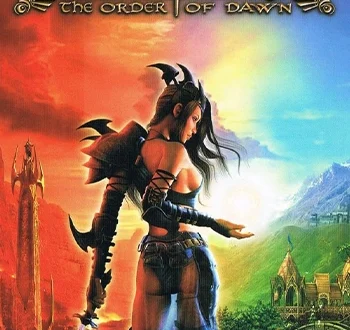A Plague Tale: Requiem
- Information
- Trailer
Year: 2022
Developer: Asobo Studio
Genre: Action-Adventure
Duration played: 20 hours (100% Completion)

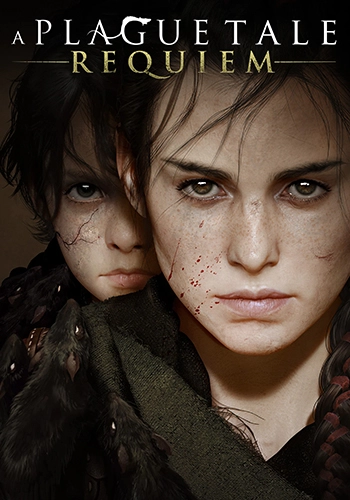
The tragedy of A Plague Tale
Despite initial skepticism, the game immediately cast a spell over me and gave me some wonderfully entertaining and emotional moments. The graphics are fantastic, with the exception of the facial expressions [...]. The soundtrack is harmonious and underlines the action, the medieval setting is credibly implemented, while the fantasy touches bring back pleasant memories of classics like Thief . While the actual story is kept quite simple, it only serves as a vehicle to guide the protagonists and the player through various opulent locations [...]. A fairy tale in a pretty guise, a horror game as well as an action adventure. I would like to see a possible sequel with more background stories, even more depth and a slightly more challenging puzzle mechanic. And of course with decent facial animations. Otherwise, and I don't say this often, the game is actually perfect as it is.
Me about A Plague Tale: Innocence
I wrote this conclusion a good three and a half years ago after I enthusiastically sat down at the end of a long gaming session to review A Plague Tale: Innocence . Three and a half years, several job and apartment changes and a new four-legged addition later, I'm once again sitting in front of a Word document and trying to write down my opinion of A Plague Tale: Requiem. This shouldn't actually be difficult, as the internet is overflowing with songs of praise for the direct sequel, which was released at the end of 2022. You can read comments such as “everything has been improved compared to its predecessor”, “must-play” and “masterpiece” - all of which are true ... at least almost.
Requiem Requiem has a great story that, in keeping with the graphic opulence, captivatingly tells the journey of the sibling duo Amicia and Hugo. It breaks with many gaming conventions by showing us vulnerable children just trying to survive against all odds. We witness dramatic scenes that move us, that touch us because they feature believable characters, because we ask ourselves the question: what would we do, what could we do? Only the facial animations are still a problem. Requiem is therefore better in almost all respects than its predecessor, which I gave the full five stars. Consequently, this installment now gets a rating of 4 1/2 - wait what? Let me explain.
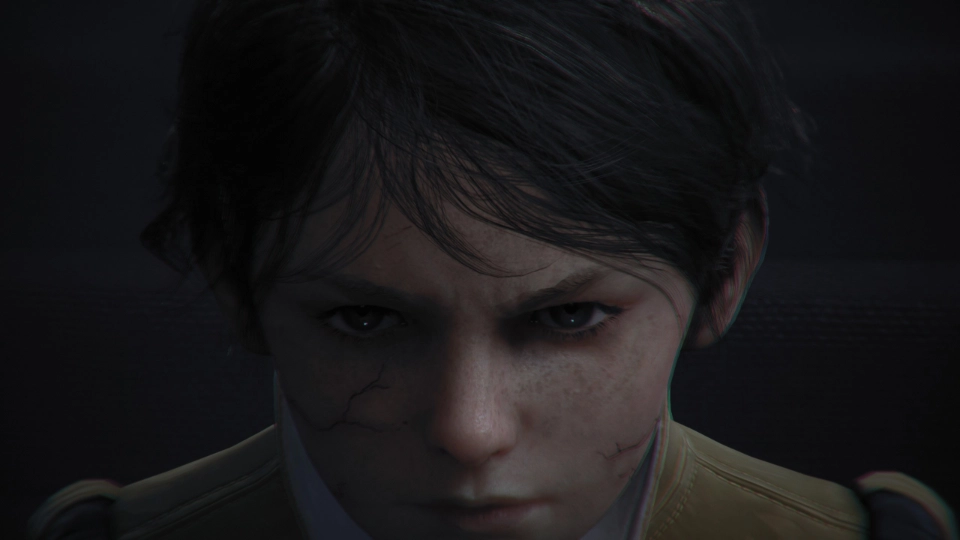
Pestial past
If you haven't read my review of A Plague Tale: Innocence (shame on you), you should urgently catch up, because as already indicated, almost everything I said can also be applied to Requiem . Once again, we follow the fortunes of the de Rune siblings in the form of teenager Amicia and her little brother Hugo as they fight their way through medieval France. The eponymous plague is, of course, the Black Death, which historically ravaged millions of people. In the game, it is depicted (not unlike parts of the ideographic representation) by swarms of rats, which devour living creatures like piranhas in a matter of seconds and even bring down buildings and entire fortresses in large numbers.
This fantastic element is explained in Requiem, as in its predecessor, by a supernatural power: the Prima Macula. Hugo, who has this power in this case, has the power to control the rodents, but also suffers from its side effects. The goal is clear: we want to cure our brother. Until now, anyone who hasn't played Innocence was in the clear, but now a small spoiler warning is in order. Because at the end of the predecessor, it becomes clear that this would become an integral part of the plot of the sequel. It should have been clear to everyone that we, together with our mother and our loyal companion, the alchemist's apprentice Lucas, would not simply ride off into the sunset and quickly find a healing tincture for Hugo - and of course that's not what happens. Once again, our heroes have to pass trial after trial, always with the hope that our little brother will survive. A classic plot that we've seen hundreds of times before ... right?

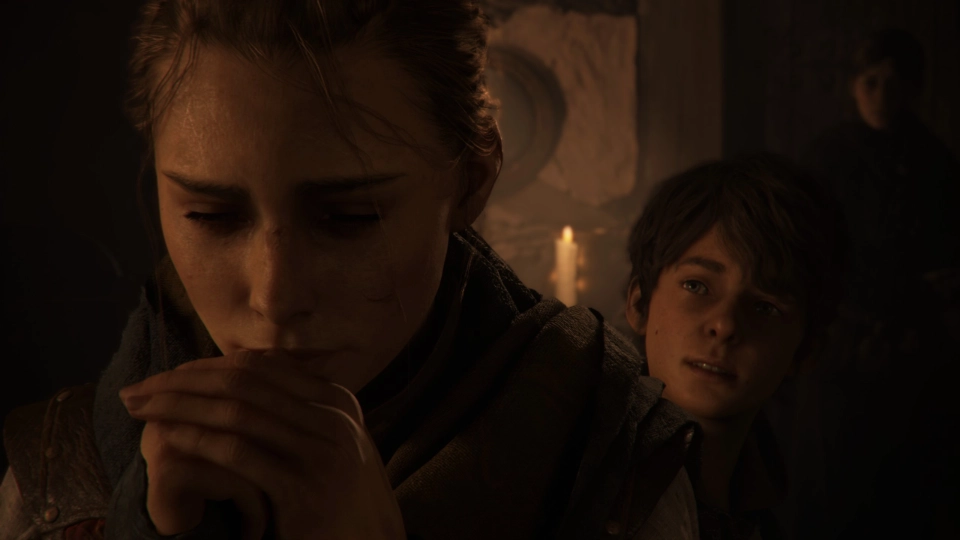
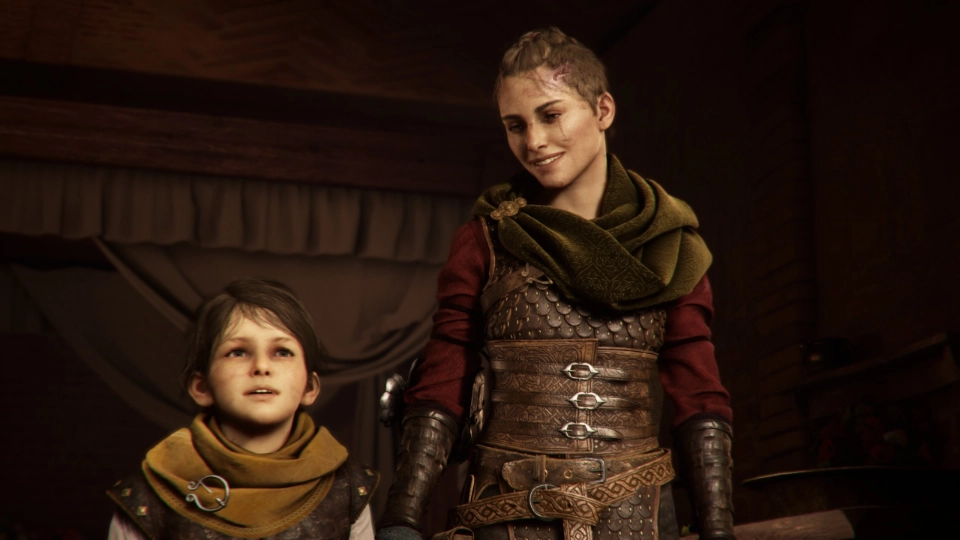
Riling railroad
While the goal of the story about the de Runes is quickly apparent, Asobo Studio manages to keep the road movie from getting bogged down in the ditch thanks to frequent location changes and well-written characters. (Almost) every one of the 17 chapters shows a new facet of this medieval world, and every location leaves us amazed anew. Be it because of the detailed environments that distract our eyes from the next checkpoint time and time again. Or because of the many small moments that reward exploration and give us more time with our protagonists. Or maybe it's just the damn beautiful graphics. In hardly any other game have I stood somewhere so often and hammered the screenshot button, looking into the distance. The fact that this beauty is bought by compromises such as noticeable pop-ins in order to run on current peripherals is only noticeable in the open-world areas, of which there is thankfully only one anyway.
Apart from that, Requiem sticks to the rule of the railroad. Although we occasionally find hidden chests and pieces along the way that we need to improve our equipment, the path in the story sections is strictly predetermined. For a narrative experience, however, this is absolutely bearable and nothing unusual in the gaming sector. However, even though Asobo Studio has often gone to the trouble of logically blocking off junctions - for example with market carts or collapsed sections of buildings - it sometimes really strains my Suspense of Disbelief when Amicia and Hugo can't push past a small crowd of adults. Or can't jump over a fence that hasn't been painted white, even though time is of the essence.
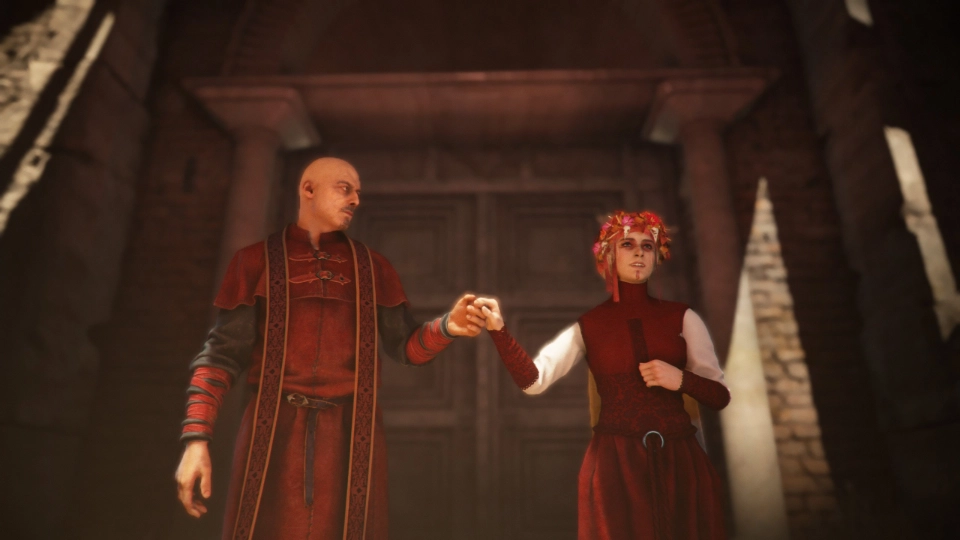
On the other hand, the areas with enemies, both human and beastly, are designed a little more freely and often offer more than two possible routes to the objective. This allows us to work out the best path and even decide whether we prefer to sneak or happily murder our way through the levels. In addition to her deadly slingshot, which Amicia uses to blast unhelmeted enemies into the sky with David-style surgical precision, she now also has a crossbow in Requiem. Although its bolts are limited, they can also onehit thickly armored enemies. And with the right upgrade, the projectiles can even be collected again after a kill, making it (far too) easy for trigger-happy players like me, especially towards the end.
Because at its heart, Requiem , like its predecessor, is a solid stealth game. Solid because the stealth mechanics sometimes don't really want to work, which is why we feel the axe in our necks quicker than we would like if we proceed carelessly. And solid because the AI is highly functional. In other words: enemies stubbornly patrol their routes and can be quickly distracted with a stone throw at the designated interaction points, such as loudly rattling armor boxes, allowing us to scurry past unnoticed. In these moments, the stealth areas are fun, especially because the atmosphere is so dense and we feel more vulnerable as weak teenagers than a Garrett or Sam Fisher.
Conversely, it's less fun when we're discovered again and again, because successfully escaping and then going back into hiding almost never works - which means reloading and re-sneaking. But that's not the issue here, because at this point I realize that I'm talking far too much about what's probably in every review and far too little about what Requiem means to me. So let's just briefly touch on it: The crafting system is nice, but not exciting, although the New Game+ and the passive perks can motivate you to play again.
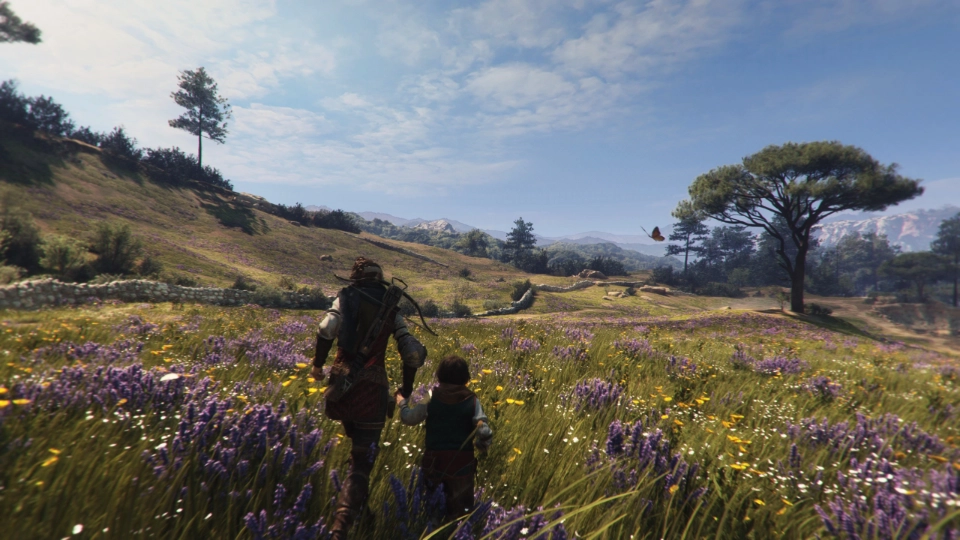

Frustratingly boring gameplay loop
So now to the meat, the reason for this review, which should also explain why I've cut the gameplay part down a bit. Because, and I have to be honest, I got a bit bored of the actual gameplay at some point. The slingshot, which still had a novelty factor in Innocence , is a bit too much of a panacea for me here: A locked door? Use the slingshot! A jammed chain? Use the slingshot! A horde of enemies without helmets? Use the slingshot! Filing your tax return too late? Use Taxifit, the handy tool so you can easily do your tax return yourself - or the slingshot! That's a big gnaw at the Suspence of Disbelief.
The actual gameplay loop had also quickly exhausted itself. Where I initially shared Amicia and Hugo's nervousness as I navigated them through the levels, after the fourth restart of the map I was more annoyed than motivated. Annoyed enough that at some point I carelessly killed guards and mercenaries to speed up the sneaking part - even though I had a nagging suspicion, almost a worry, that by turning Amicia into a cold-hearted killer I might bring about a 'bad' ending. The fact that this fear arose in me is, for me, proof of the outstanding character drawing, which I would like to discuss later. It shows that I cared enough about the fate of the brother and sister to question my own play style - something very few games manage to do.
Unfortunately, this is not the end of my criticism of the mechanics used. Because even the rats, which I still consider to be one of the best game ideas of recent years, were both overused and underused. What do I mean by that? As I mentioned at the beginning, Requiem is a kind of road movie, the search for a MacGuffin, for Hugo's cure, which takes our heroes from A to B. Unfortunately, the game recycles itself in the process: We arrive in an idyllic town, a feudal dream in the brightest sunshine, which a little later is transformed into a corrupt travesty by the rats. This juxtaposition, good and bad, before and after, is played out too often for me, with everything beautiful always being turned into something bad. Since this serves as character motivation, it is a necessary evil, but makes many sections predictable. Combined with the knowledge of the unsatisfying gameplay loop of the inevitable tragedy, the anticipation of new locations dims after the second time at the latest.

At the same time, the rats are exclusively plot devices. Where they tear down walls and entire houses in cutscenes, they barely make it up a flight of stairs in the level. This inconsistency can be explained in terms of the story, but any logical argumentation seems a little contrived. It seems as if Asobo Studio has run out of ideas on how to use this element in an exciting way. The moments in which I was able to chase the swarm crawling across the ground towards the guards in the best The Darkness The Darkness-style were absolute highlights for me, simply because it was something different. Although our arsenal is constantly expanding, offering us new ways of interacting with the nasty rodents, at the end of the day the beasts are just annoying. Whereas in Innocence they triggered this constant feeling of anxiety and horror, the game passages in Requiem are very shallow puzzles that send us scurrying from conveniently placed light source to conveniently placed light source.
It doesn't help that we are given tools such as tar puddles to explore the levels creatively. On the contrary, almost all of them serve to eliminate our pursuers in even more complicated ways. After all, it is somewhat awkward to first lure an enemy into position and then shoot out his torch (this is always followed by a big hello from the surrounding rodent society) or, conversely, to set him directly on fire. Alternatively, this whole morbid procedure could simply be completed in one go using a sling or crossbow. There are no moments that require well thought-out planning or in which we feel superior because we have outwitted our opponents. The game clearly shows us which routes we should take at all times.
I would have liked to have seen more options here to make sneaking a bit more fun or make it easier to hide. Because once discovered, the Terminator-style guards run after us mindlessly, sometimes directly into our line of fire. Requiem clearly shows that it has been optimized primarily for stealth and tries to conceal this lack of alternatives by means of gadgets that suggest deeper game mechanics. If instead we had more (or any) opportunities to confuse our pursuers or go into hiding, the goodies would at least make sense. As it is, however, they offer variance in exactly the wrong place - annoying!
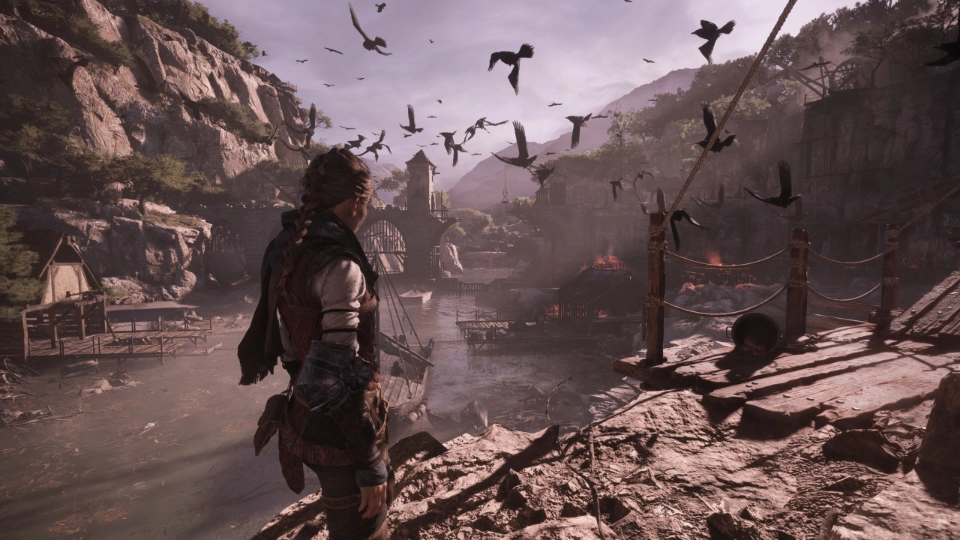
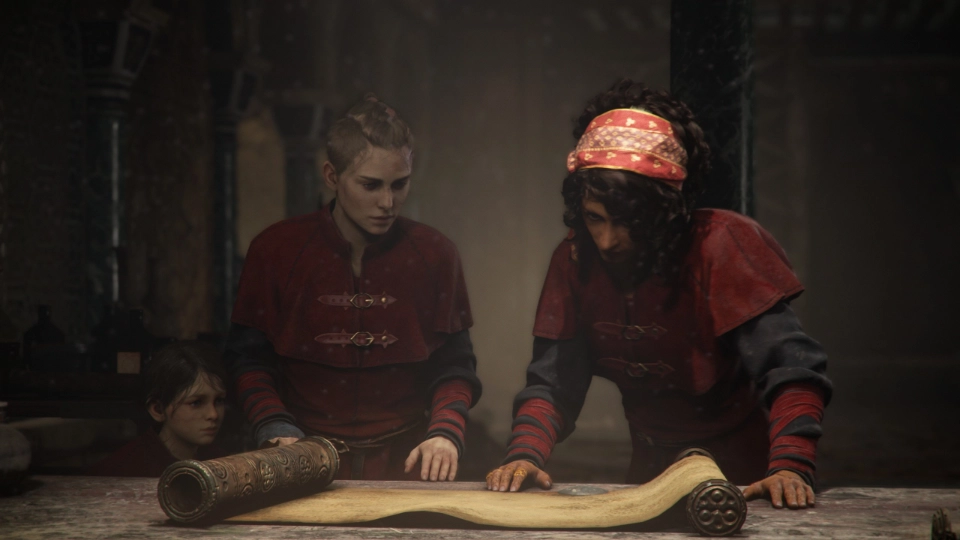
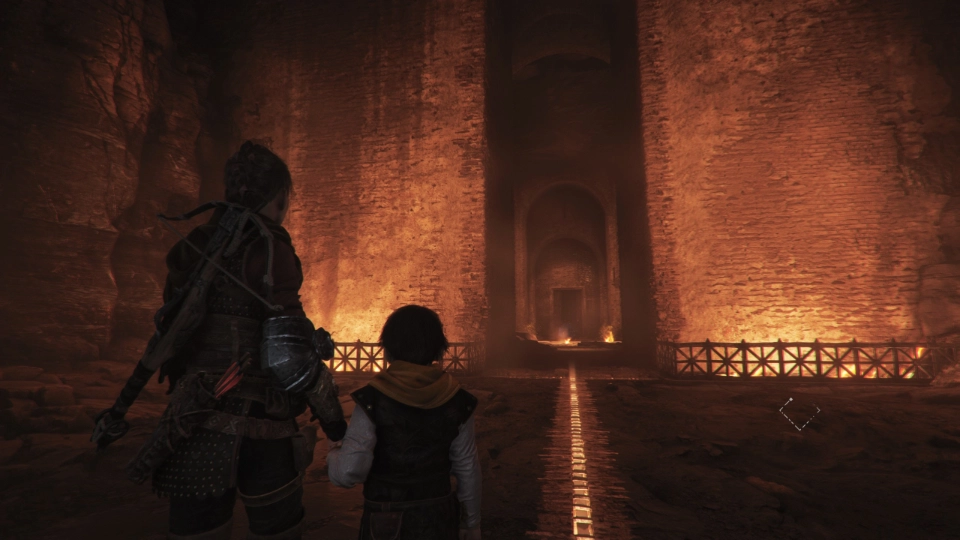
Missed opportunities, realized virtues
So we can see that, like its predecessor, Requiem would have the chance of a top score ... if it had worked on its shortcomings. As already mentioned, the graphics are breathtakingly beautiful and the various locations are enchantingly presented. This is offset by the stiff facial expressions of the characters, which, apart from the cutscenes, are on a par with its predecessor, which is three years older. A few more character models, especially for the enemies, wouldn't have hurt either.
Meanwhile, I have absolutely nothing to complain about in terms of sound design and the soundtrack is once again of a very high standard, even if, frankly, the chorales of the eponymous requiems were a little too repetitive for me at some point. However, this blunder is forgotten at the latest when the screeching of the violins and the darkly menacing cello rise up as soon as a rat enters the screen. It's the equivalent of fingernails scratching across a blackboard and 1000 percent in tune - just like its predecessor.
My previous tirade of criticism, meanwhile, can be almost entirely ironed out by one aspect that I've now brought up several times: storytelling and character design. As someone who has now gained a bit more experience in writing character motivation, I've often just sat there and said out loud, “Yeah, that's it. That's how you write a believable character, that's how you explain a change in personality, that's how you get a story to be plausible." The fact that Asobo Studio hired child actors to play Amicia and Hugo in Innocence was a real blessing. The talent of Logan Hannan (Hugo) and especially Robyn Wolf, who lends her voice to Amicia, is undeniable. Because of this top level, both in the cast and in the story, I can also forgive a few minor inconsistencies in other places, when you realize that someone is just acting in order to steer the plot in a certain direction. The disbelief works here, the railroad works here - precisely because I don't have to play at this moment.
And that finally brings me to my explanation as to why the sequel comes off somewhat worse in my rating than its predecessor. Precisely because Requiem is better. While Innocence is the pilot of Breaking Bad Breaking Bad , which raises questions and makes you want more, Requiem drives the story forward, but gets in its own way with its gameplay and is therefore reminiscent of the The Walking Dead-loop: Happy ending - demise - new happy ending - demise again. I wanted to know at all times what was happening next, which horrors were coming up and if Amicia and Hugo, together with their mother and Lucas, would get the happy ending propably everyone is hoping for. But instead of being able to watch beautiful cutscenes with well-acted and written dialog, I first have to slip past a few stupid guards, scare off annoying rats and look for the little moments and collectables scattered around the levels that tell a bit of a story.
It's a paradox that I wanted more from the game, but at the same time I wanted to play less. The raillroad bothered me just as much for showing me the straightforwardness of Requiem as it did for not bothering me, because in the meantime a stirring story, or rather a relationship, was being told. As someone who has a good relationship with his big brother, the story touched me in another way, of course, simply because it shows that there's hardly anything like true sibling love - Michel, if you're reading this: love you brother! <3
Love you, too!
Note from the editor

Summary
And that's exactly why I'm now saying what I would have liked after Requiem : a TV series. Maybe a mini-series or even just a movie that doesn't fall into the recycling trap of the game or has to submit to the slingshot approach. I want to see so much more of this story, experience more - something that the video game genre is actually predestined for and exactly what Requiem basically offers - just not in a satisfying way. I'd rather have a 'reduced' media form that is consistently thrilling.
As a result, I am left with an ambivalent conclusion, which is probably not really comprehensible for people who have not yet played the game: Requiem is a remarkable experience that you should have experienced, especially if you liked its predecessor. But Requiem is not a good game - because it is not good enough for its story. That's why it's not a bad game ... it just makes you wish it was a must-play, a masterpiece.


